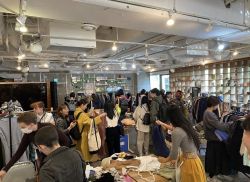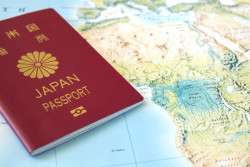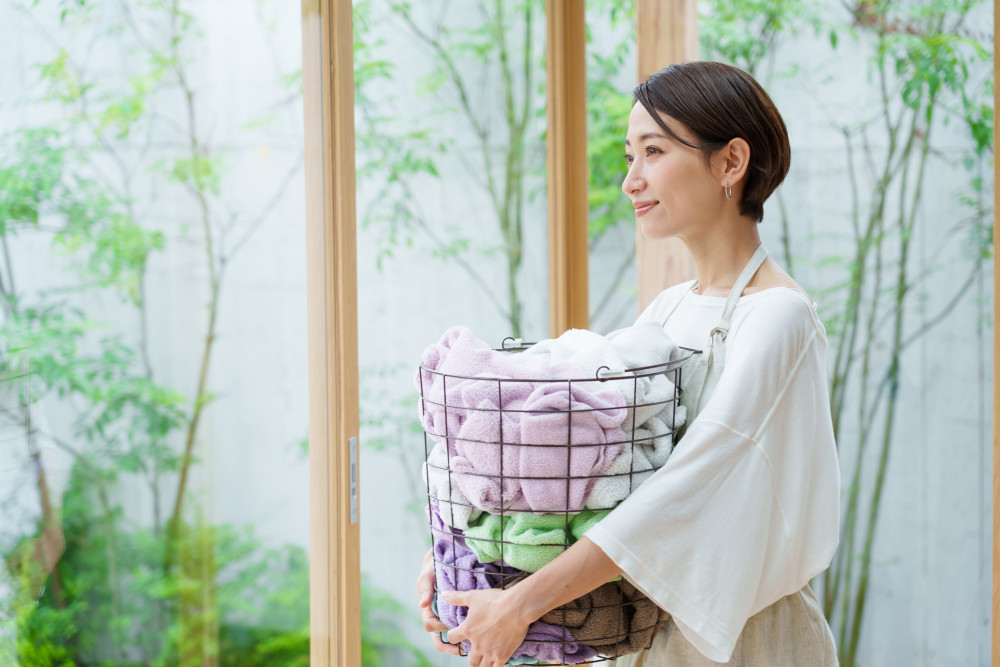
July 11, 2024
How to Do Your Laundry in Japan
A guide on Japanese washing machines, detergents, air drying, and more
You just arrived in your Japan apartment and realized you spilled coffee on your favorite jacket. You rush to use the washing machine to remove the stain but don’t have any detergent! Or you don’t know how to use the settings. Or you want to use the best fabric conditioner. What now?
Keep reading this comprehensive guide to learn more about how to do laundry in Japan and how to use a Japanese washing machine. We tackle tips and tricks on how you can save that jacket, and ensure you have a fresh pair of socks to use for work tomorrow.
Laundry Day in Japan
In Japan, when it comes to laundry day, people prefer to choose the sunniest days for washing and drying their clothes. The sunlight naturally disinfects and freshens up garments, leaving them clean and pleasant.
It’s common practice for people to hang their laundry outside to dry, but they don’t leave their clothes outside overnight. This isn’t just about hygiene; some people are concerned about potential issues like attracting insects or developing a musty odor. In rare cases, women report their intimate clothing getting stolen!
Additionally, there’s a cultural belief in Japan that drying clothes at night may invite negative energy or spirits. As a result, many people make a point to bring their laundry indoors before dusk and they ensure that everything is properly dried and ready for use the next day.
Most Japanese people tend to wash their clothes every day, or every other day, as they do not like soiled clothing piling up. If they are busy, they mainly do it early in the morning before going to work, or on weekends when they have more time to do chores around the house. You’ll often see balconies of apartment buildings filled with colorful rails of clothing. Japanese people don’t use thin wire and clothes pegs, but they hang their clothes on hangers, which they hook over wide metal rods.
Types of Laundry Detergent in Japan
In Japan, you’ll find different laundry detergents like liquid, powder, and pods. Liquid detergents are popular because they’re easy to use and dissolve quickly in water. Powder detergents are usually more affordable. Pods are convenient since they’re pre-measured, making laundry a breeze.
Some detergents are designed for indoor drying (部屋干し用洗剤, heyaboshi-yo senzai) to prevent musty smells that can happen when you dry clothes inside, especially during the rainy season (beginning of June to July). Outdoor drying detergents are more general-purpose and work well for drying clothes outside.
Here is a guide to common terminologies and brand names used for laundry in Japanese and English.
| Japanese | English | Romaji |
| 洗濯洗剤 | Laundry Detergent | Sentakusenzai |
| 洗濯用合成洗剤 | Synthetic Laundry Detergent | Sentakuyou Gouseisenzai |
| ファブリックソフナー | Fabric Softener | Faburikku Sofunā |
Popular Detergent Brands
- Ariel:
Ariel is a favorite in Japan for its strong cleaning power. This brand is well known in many countries and it’s great at tackling tough stains and keeping clothes looking bright and fresh. Many households trust Ariel for its reliable performance.
- Attack:
Attack is well-loved for its wide range of detergents. They offer products for cold water washes and quick cycles, which is handy for busy people. Its versatility and efficiency make Attack a popular choice.
- Nanox:
Nanox is known for its deep-cleaning formula. It gets deep into the fabric to remove stubborn dirt and grime. People in Japan appreciate how clean their clothes feel after using Nanox, making it a top pick for those who want a thorough clean.
Fabric Softener
- Purpose: Fabric softeners, like Lenor and Sauvitel, make clothes feel softer and prevent static. They’re added during the rinse cycle in liquid form.
- Popular Brands: Lenor and Sauvitel are known for their variety of scents and additional benefits, such as anti-wrinkle properties.
Types of Japanese Washing Machines
- Top-loaders:

This type of washing machine is the most commonly used in Japan. You simply load your laundry by opening the lid at the top. It is straightforward to use.
- Front-loaders:
Although not as popular as top loaders, front loaders provide additional benefits as they are very efficient and use less water. They are also gentle on your clothes but can be a bit pricier than top-loaders. This type of washing machine has its opening in the front and is pretty standard in most Western countries.
- Built-in Dryers:
These laundry machines have a dryer system that can manually or automatically dry your clothes after the cycle finishes. This type of washing machine is considered to be the most expensive compared to the other options mentioned earlier but can save space in your home as well as time going to the nearest laundromat or waiting for your hanged clothes to dry.
Why do Japanese People Prefer Air Drying to Dryers?
If you have visited a Japanese friend’s home, or if you live in a Japanese apartment yourself, you have probably noticed that most households do not own a dryer. Unless you live in a shared house, chances are you are left with a drying pole and a standard washing machine without the luxury of a dryer. Why? Unlike most Western homes, Japanese families opt not to have one due to high energy costs, limited space, environmental concerns, and personal preferences.
In addition, Japanese culture heavily emphasizes respect for nature and sustainability while living simply and frugally. Air drying is seen as a more environmentally friendly option and is also believed to keep the quality of the fabric in good condition by not exposing it to harsh temperatures, agitation and heat of dryers.
In Japanese homes, especially in urban areas where space is limited, drying poles (known as 物干し竿, monohoshi sao) on balconies and indoor drying racks are commonly used.
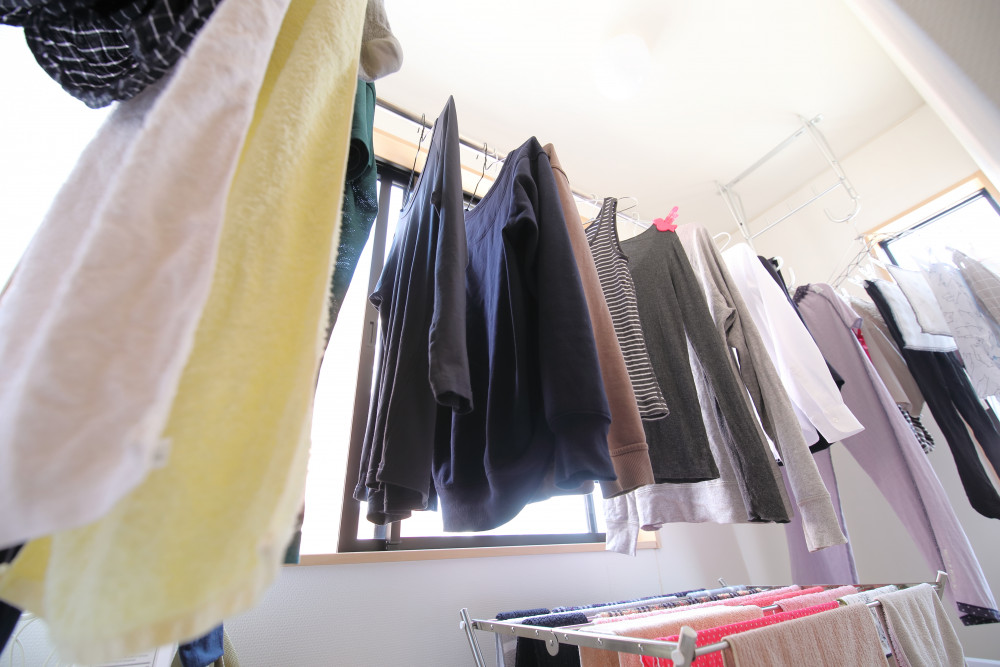
These provide a convenient and efficient way to hang laundry for drying. During the rainy season (known as 梅雨, tsuyu), when outdoor drying is challenging, indoor drying racks become essential for keeping clothes dry and preventing mold and mildew.
Coin Laundries in Japan
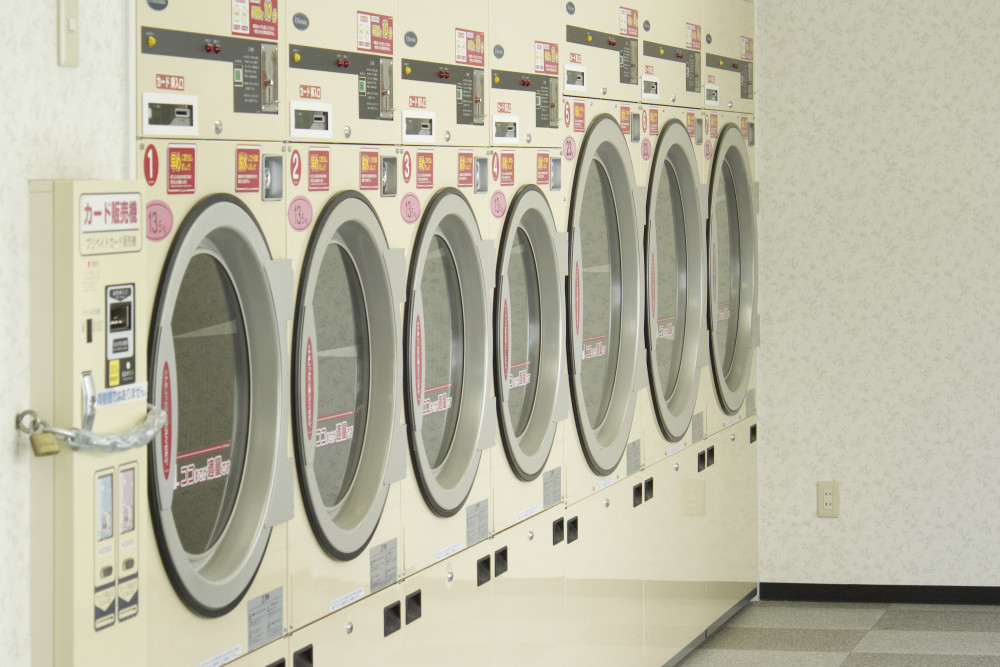
Choosing a coin laundry over buying a washing machine can be a smart move for a number of reasons. Besides the potential cost savings, which can vary depending on location and frequency of usage, people often opt for this option due to its convenience. Perhaps their home doesn’t have a balcony, or they don’t have space in their home.
How To Find a Coin Laundry Near You
Spotting coin laundries in Japan is made easy with Google Maps. There are also dedicated Japanese apps like Laundrin show you the coin laundries that are closest to your area. You’ll typically find coin laundries in urban areas, residential neighborhoods and close to train stations, making them convenient for residents and visitors alike.
What Services Do Japanese Coin Laundires Offer?
Coin laundries cater to various laundry needs. They offer large-capacity washers and dryers, ideal for washing bulky items like blankets and comforters. Some even boast unique features such as sneaker washing machines, dry cleaning services, and vending machines stocked with detergent, and other essentials.
Cost and Convenience
Using a coin laundry usually costs between ¥100 to ¥500 per load, depending on machine size and extra services. Payment methods commonly accepted include coins or prepaid laundry cards, adding to the convenience. Plus, many coin laundries operate round the clock, offering flexibility. Some locations even provide English instructions, catering to non-Japanese speakers.
Bring a snack or download a movie to entertain yourself. Some coin laundry shops have a TV, sofa, and sometimes a vending machine. Most coin laundry machines only accept ¥100 or ¥500 coins but there is pretty much a coin changer machine in every laundromat in Japan. You can also just wander around the local neighborhood to explore! Doing laundry doesn’t have to be a mundane chore.
For those delicate pieces or garments needing extra TLC, dry cleaning services (クリーニング) come to the rescue. You can scout them out by using Google Maps, reading some reviews online, or asking around for recommendations from neighbors.
In small cities, dry cleaning services can sometimes be located near coin laundries. Prices vary but generally hover around ¥500-¥1000 per piece. Many offer quick turnarounds, perfect for those who are always on the go.
Dry Cleaning Japanese Vocabulary
| Japanese | English | Romaji |
| クリーニング | Cleaning | Kuriiningu |
| ウェットクリーニング | Wet Cleaning | Wetto Kuriiningu |
| 取り扱い説明書ー | Care Instructions | Toriatsukai Setsumeisho |
| お預かり期間 | Storage Period | Toriatsukai Setsumeisho |
Common Mistakes When Doing Laundry in Japan
Steer clear of laundry problems by watching out for a few key things. Always check your clothing labels for washing instructions, as Japanese machines may operate differently. Be gentle with dryers to avoid damaging soft fabric, and lastly, don’t forget to promptly retrieve your laundry and other belongings to keep the place for the next customer.
